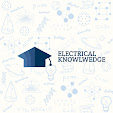ENERGY, [ENERGY AUDITS]
ENERGY AUDITS
Energy audits
The verification, monitoring, and analysis of the use of energy including submission
of technical report containing recommendations for improving energy efficiency
with cost-benefit analysis and an action plan to reduce energy consumption
Why the Need for Energy AUDIT?
1. The three top operating expenses are energy (both electrical and
thermal), labor and materials.
2. Energy would emerge as a top ranker for cost reduction
3. primary objective of Energy Audit is to determine ways to reduce
energy consumption per unit of product output or to lower operating costs
4. Energy Audit provides A “bench-mark” (Reference point) for managing
energy in the organization
Types of energy audits
1. preliminary energy audit
2. targeted energy audit
3. detailed energy audit
Preliminary audit
1. preliminary energy audit uses existing or easily obtained data.
2. find out the energy consumption area in the organization
3. estimates the scope for saving
4. identifies the most likely areas for attention
Targeted energy audits
1. targeted energy audits are mostly based upon the outcome of the
preliminary audit results.
2. they provide data and detailed analysis on specified target projects.
3. targeted audits, therefore, involve detailed surveys of the target subjects/areas with analysis of the energy flows and costs associated with those targets.
Detailed energy audit
Detailed energy audit evaluates all systems and equipment which consume
energy and the audit comprises a detailed study on energy savings and costs.
A detailed energy audit is carried out in phases
1. the pre-audit phase
2. the audit phase
3. the post-audit phase


Energy audit instruments
Power analyses
Electrical measuring instruments:-
These are instruments for measuring major electrical parameters such
kva, kw, pf, hertz, kvar, amps, and volts. In addition, some of these instruments
also measure harmonics.
These instruments are applied online on running motors without any need
to stop the motor. Instant measurements can be taken with hand-held meters. While
more advanced ones facilitate cumulative readings with printouts at specified
intervals.
Fuel efficiency monitor
This measures oxygen and temperature of the flue gas. Calorific values
of common fuels are fed into the microprocessor which calculates the combustion
efficiency.
Pilot tube and manometer
Air velocity in duets can be measured using a piolet tube and inclined manometer
for further calculation of flows
Ultrasonic flowmeter
This is a con-contact flow measuring device using the doppler effect principle. There is a transmitter and receiver which are positioned on opposite sides of the pipe. The meter directly gives the flow. Water and other fluid flows can be easily measured with this meter.
Lux meters
Illumination levels are measured with a lux meter. It consists of a
photocell which senses the light output converts to electrical impulses which
are calibrated as lux.




No comments:
If you have any doubts, please let me know